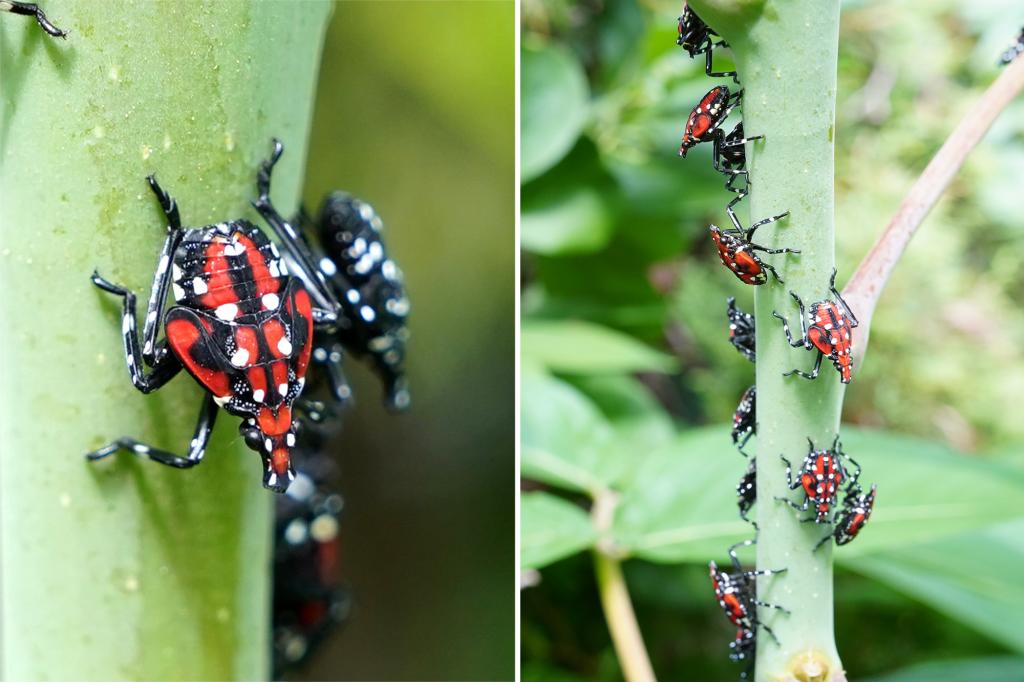Turns out the lantern flies are the ones crushing it.
The Big Apple apparently claimed a premature victory in the war against the pesky bug last year — with officials now admitting the infamous “Stomp Out” campaign that asked people to step the flies failed and the invasive insects are making a comeback.
“The really long list of plants that it’s able to feed on, the ability to move in multiple life stages fairly significant distances and just the sheer population numbers of it really probably from day one signaled that this was a very challenging battle,” Chris Logue, the director of the state Division of Plants at the Department of Agriculture and Markets, told The Post.
“We probably, going into the future, are going to continue to have spotted lanternfly. It’s probably going to continue to expand its range.”
No amount of stomping, equishing or insecticide will vanquish the species, he explained, an insight he first shared this week with Gothamist.
The mission has shifted to managing their exploding populations — a major change from the all-out war New York declared on the invasive bug back in 2023 when civilians were urged to take up arms by ruthlessly stomping the critters on sight.
The movement was instantly popular — even young children took to the streets with heavy shoes on foot and bottles of vinegar on hand to help eradicate the lantern flies.
As of today, the invasive critters have been detected in 26 of New York’s 62 counties, but state officials have concentrated their eradication efforts in northwestern areas where lantern flies pose an existential threat to grape farms and wineries.
And the bugs are living up to five months longer than they did when they first arrived, according to an NYU study published in December.
Ags and Market officials recently received their first report of an adult lantern fly out of the Big Apple — which is up to a full month earlier than they were previously expected to transition into adulthood, Logue said.
Just ten months ago, pest management experts at Cornell University celebrated a premature victory, telling The Post at the time that there were significantly fewer lantern flies across the city thanks to Operation Squish.
“We’re likely reducing the population,” one Cornell expert said last September.
But the apparent drop is now looking like just part of the ebb and flow of lantern fly populations, Logue said — the bugs feast on plants until they deplete them and then move onto another area where the bounty is plentiful.
The overall population has continued to expand, reaching as far as 18 states.
To combat the New York pests, officials routinely treat Tree of Heavens and other host plants that lantern flies latch onto in counties north and west of Albany, but have left the Big Apple alone because it doesn’t have crops at risk of decimation.
“We aren’t doing treatment in the city. We have a couple of locations upstate that are high consequence from the standpoint of proximity to vineyards that may have some treatments done, but we aren’t doing any of that type of work down in the city,” he said.
That’s not to say civilians shouldn’t try to eradicate lantern flies on their own accord, but the stomping method isn’t as dire as it may have once been.
Now, civilians should concentrate on eliminating egg masses in the fall, and checking to see that they’re not unknowingly carrying the avid travelers during road trips.
The good news is that some birds and bats are starting to munch on lantern flies, which preivously had no natural predators.
Ags and Markets also urge New Yorkers who live north and west of Albany to report lantern flies so the state department can zero in on affected areas.
“We’re not going to discourage people from stamping them if that’s something they wish to continue doing,” said Logue.
Read the full article here

